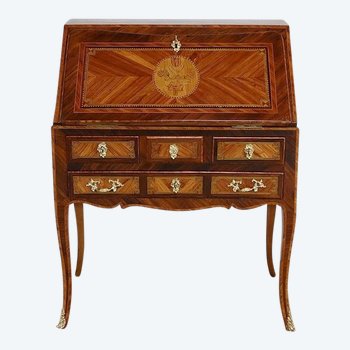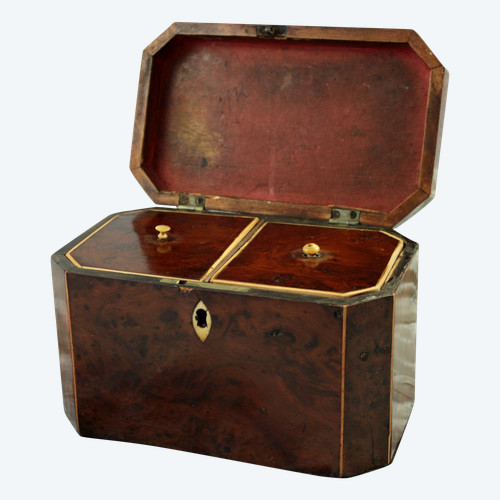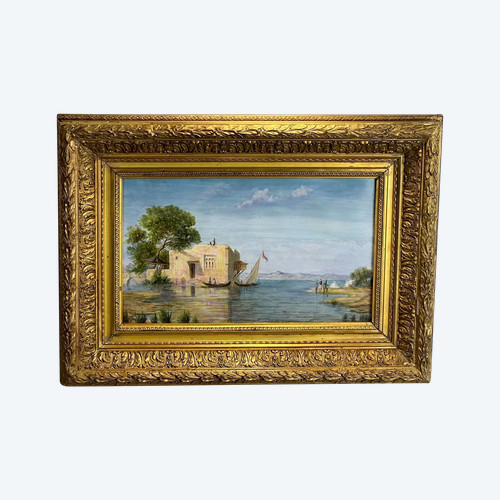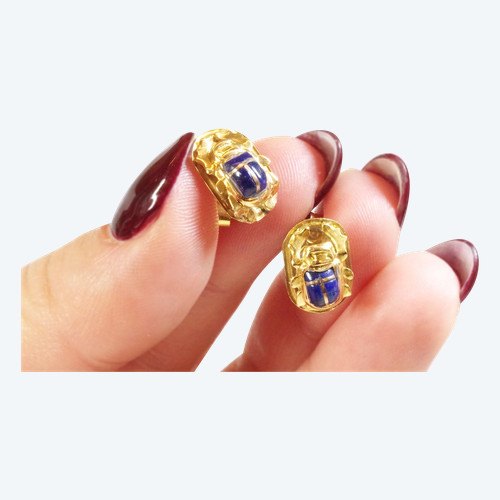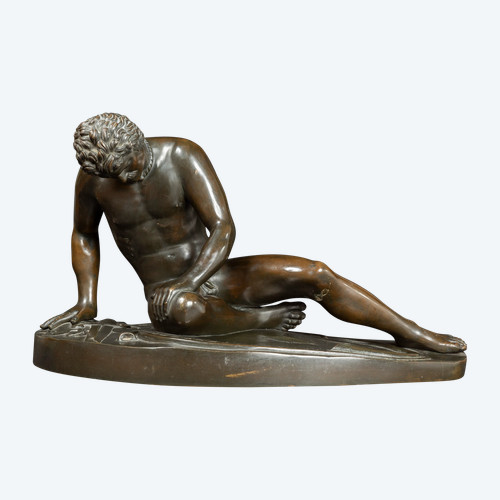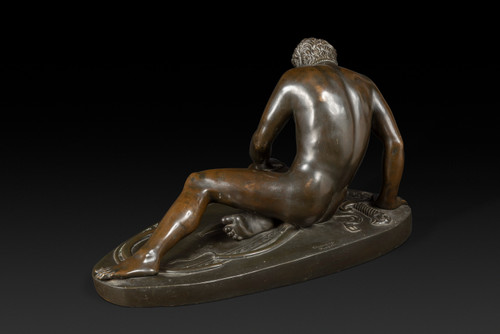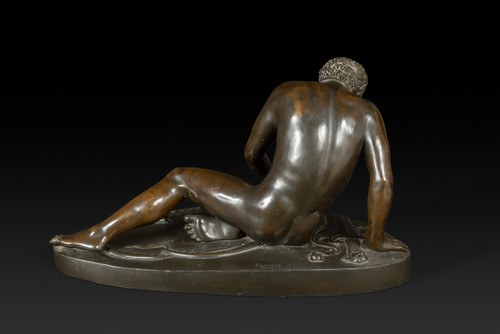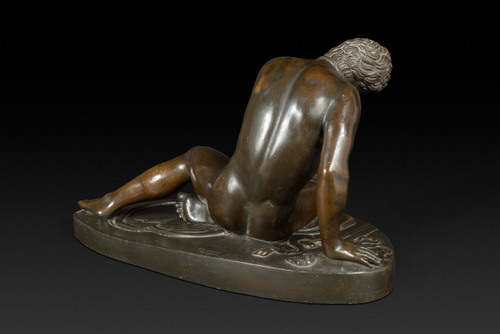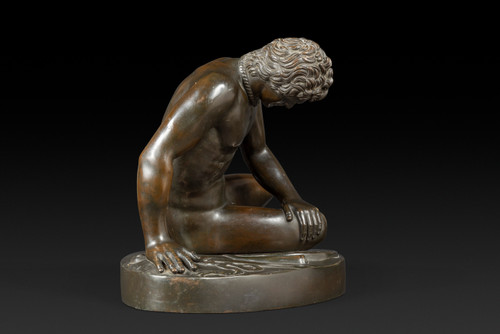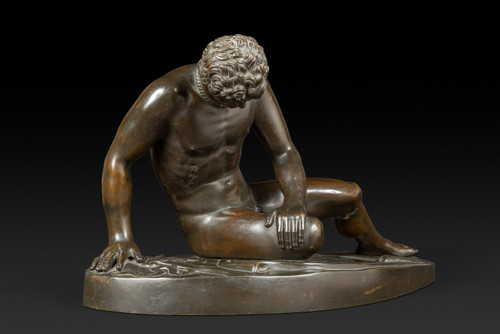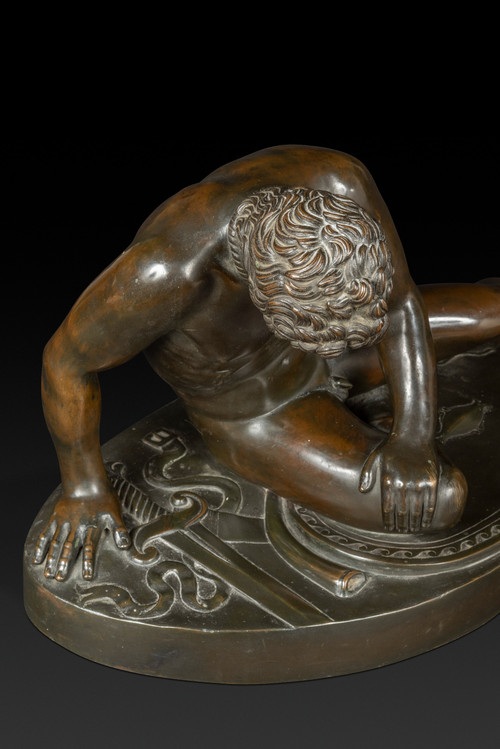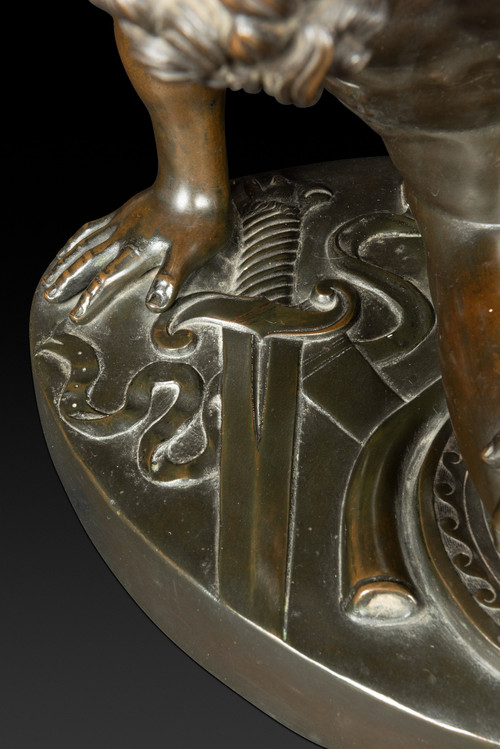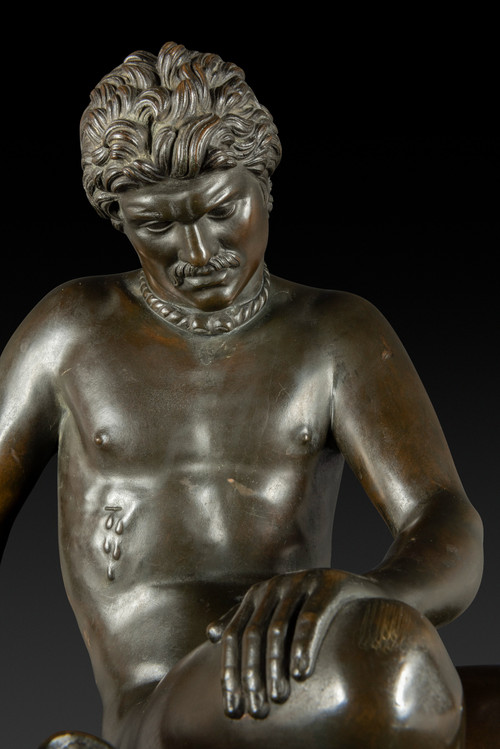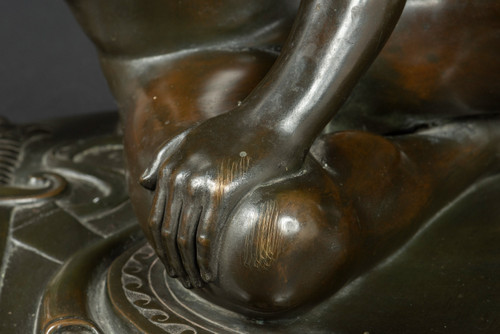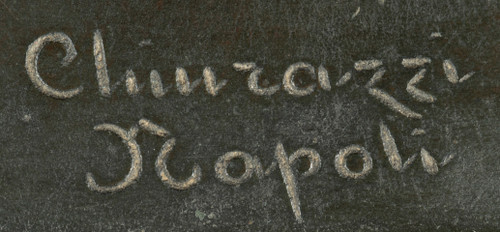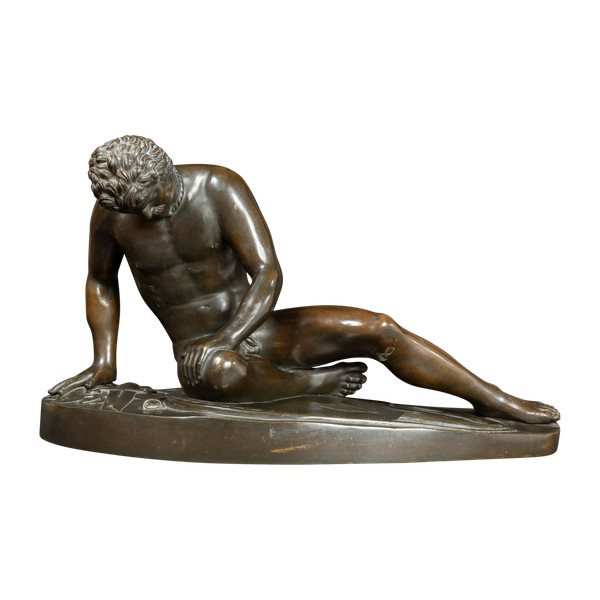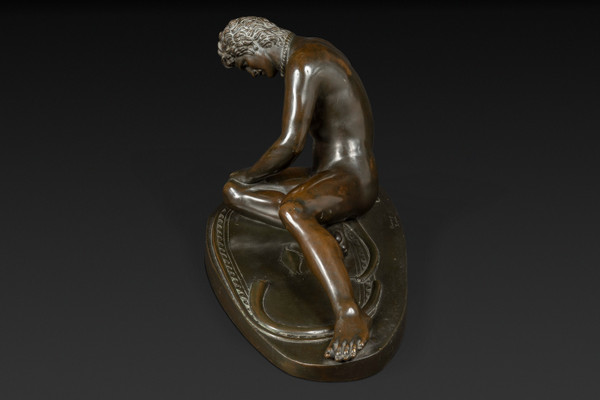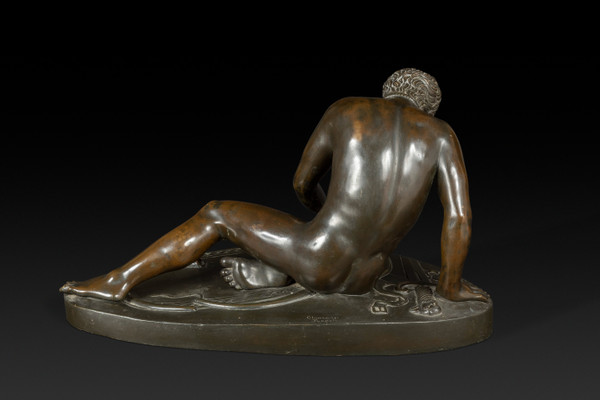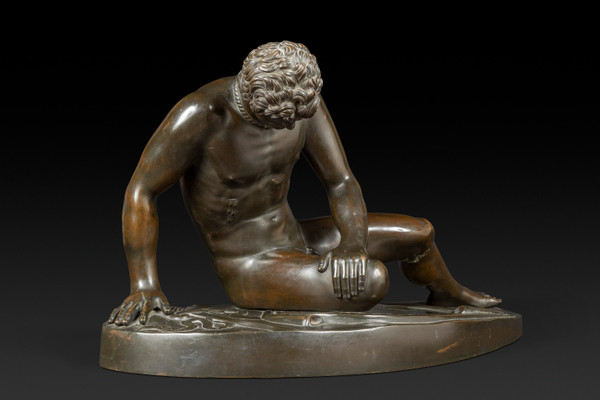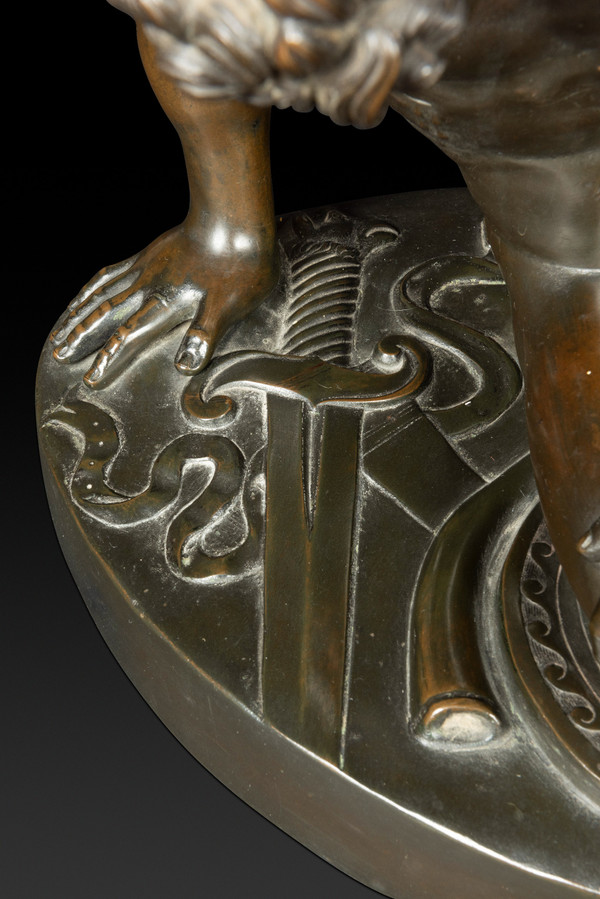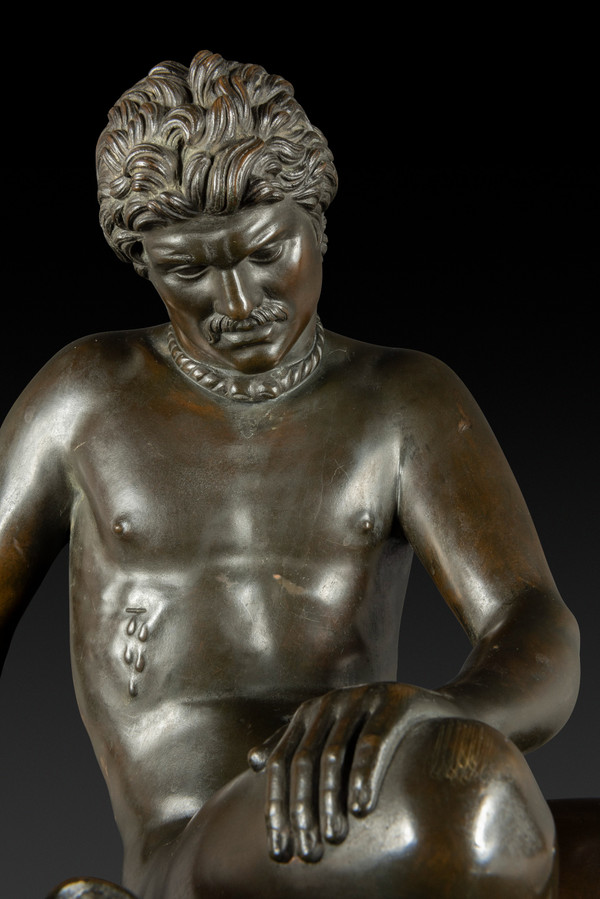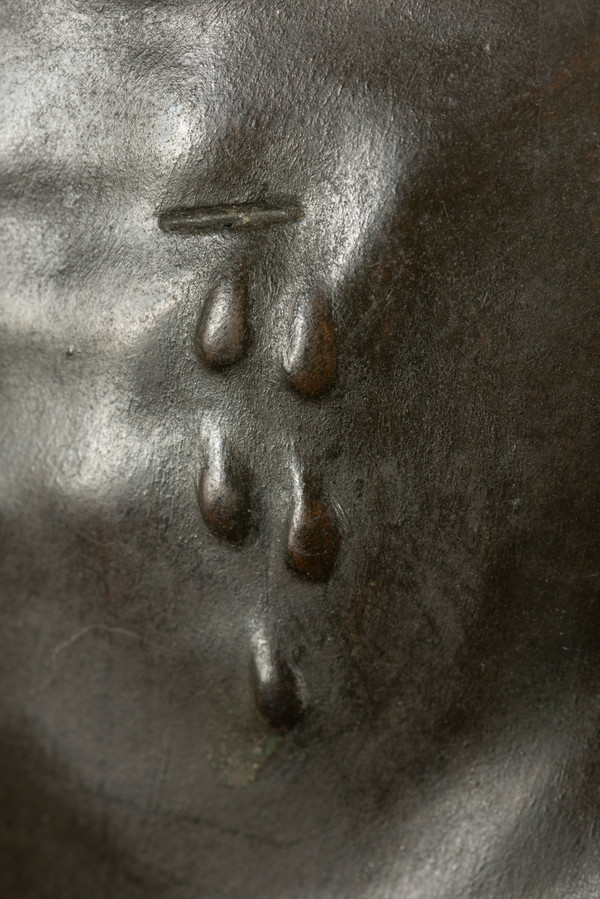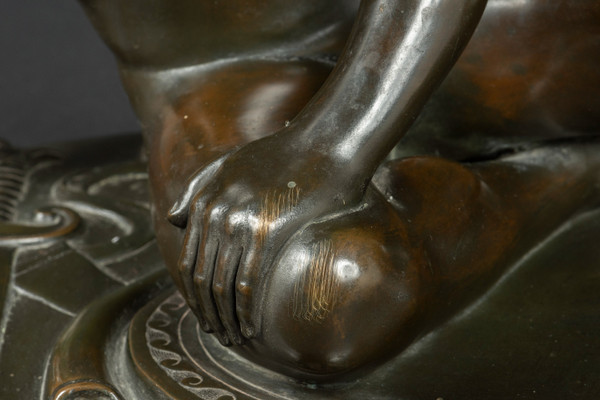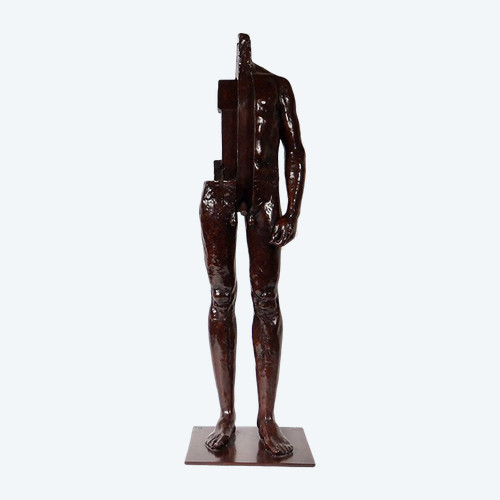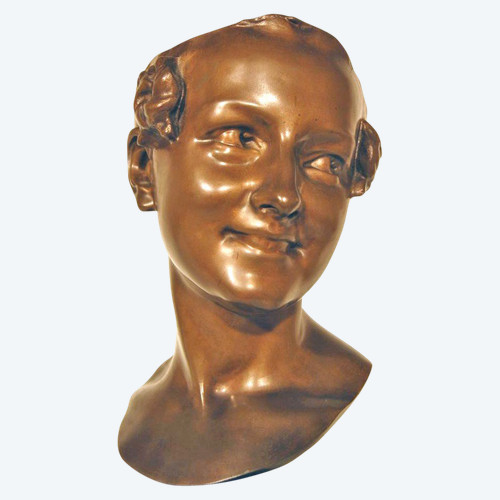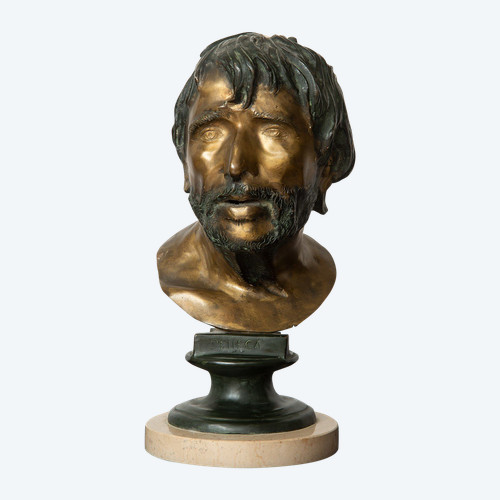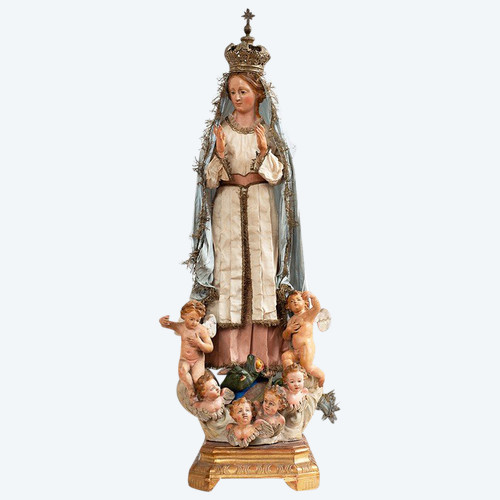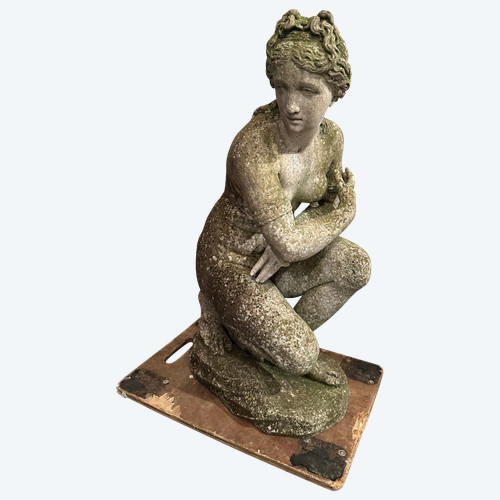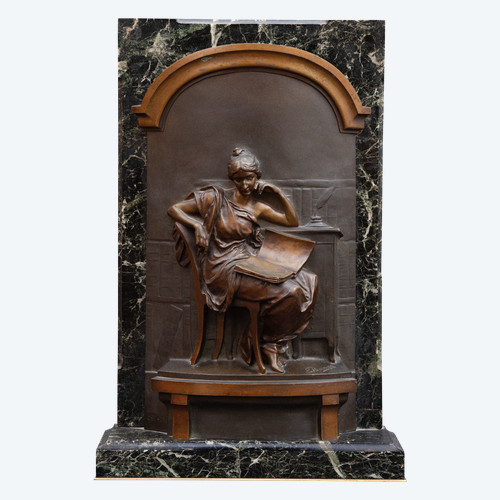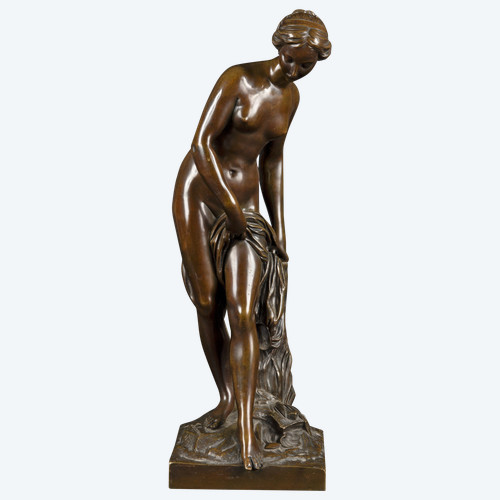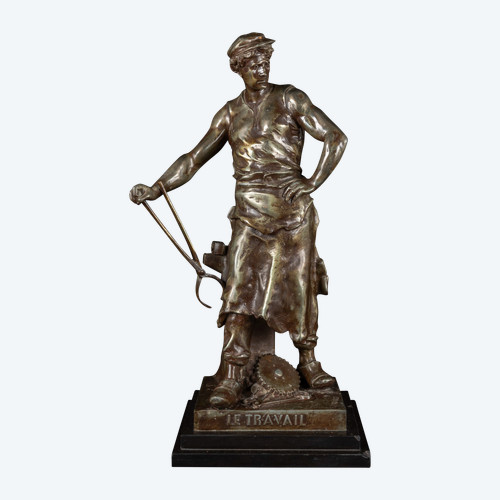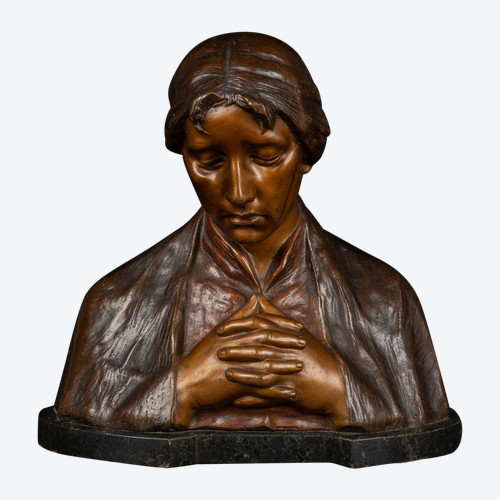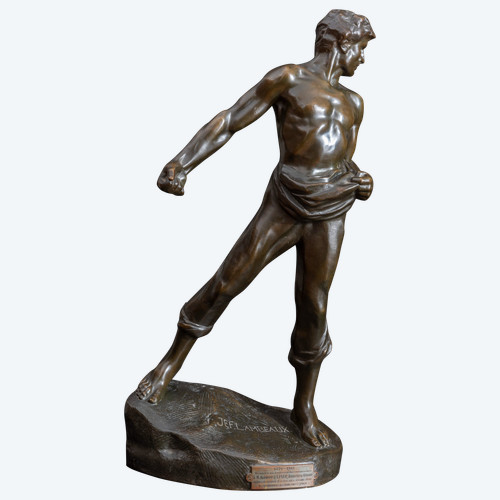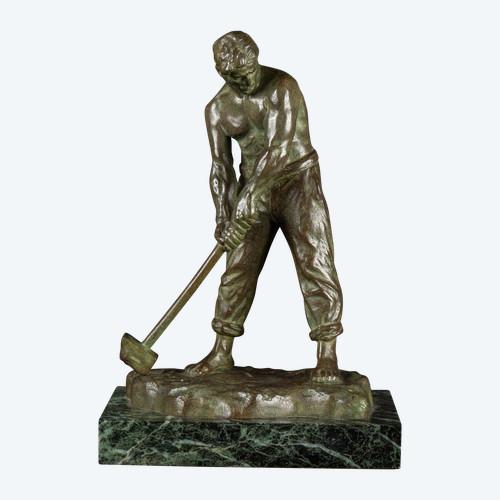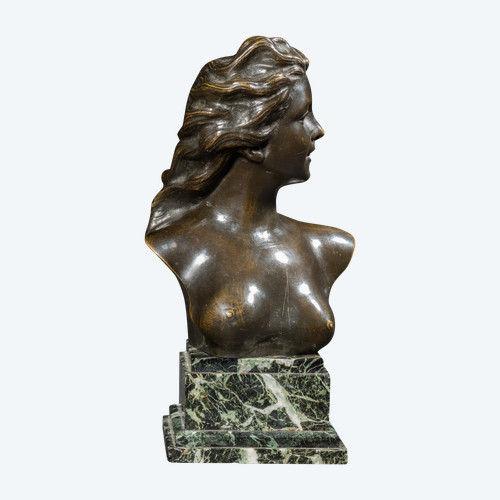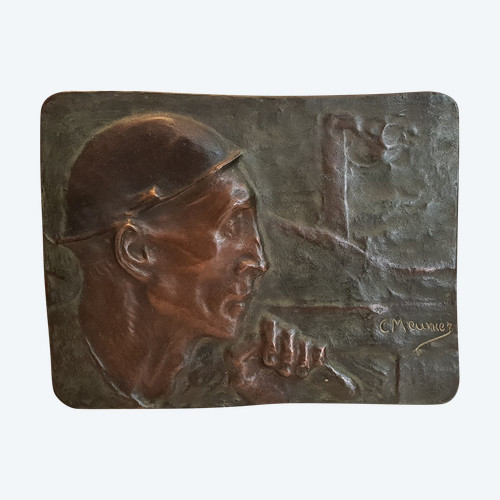This description has been translated and may not be completely accurate. Click here to see the original
Description of the Work:
A Celtic warrior lies naked, half-reclined on his shield, his body bent under the effect of pain. His right hand touches the ground while his face, marked by suffering, is turned downward. His left hand rests on his bent right leg, with the foot placed under his almost fully extended left leg. Blood flows abundantly from his chest, indicating a severe wound.
This warrior is distinguished by his mustache, long disheveled hair, and torques, a typical Gallic ornament. His oval shield, with an enlarged central spine, is a characteristic Celtic weapon. A curved trumpet, called a cornu, with its suspension cord, is also represented at the base.
History of the Work:
Originally, "The Dying Gaul" is a Roman marble sculpture that copies a lost Greek original from the Hellenistic period, probably created in bronze between 230 and 220 BC by Epigonos of Pergamon. This work, also known as the Capitoline Gaul, is exhibited at the Palazzo Nuovo (Rome) in the Capitoline Museums. It depicts a wounded Gallic warrior, naked and collapsed on his shield, with abundant hair and a torque around his neck. The sculpture testifies to the Celtic defeat and illustrates the strength of the victorious people while paying tribute to the courage of their adversaries. Discovered in the early 18th century, it was acquired by Pope Clement VII in 1734 and exhibited in the Capitoline Museums. The statue's fame has led to numerous copies and interpretations, influencing art and emotional representation through the centuries.
The Founder:
The Chiurazzi Foundry, founded by Gennaro Chiurazzi in Naples in 1870, specialized in reproducing classical and Renaissance sculptures in bronze using the lost-wax method. Due to the growing demand for copies from renowned museums, the foundry gained international fame, winning awards at exhibitions in New Orleans and Turin. After Gennaro's death, his sons continued the business, expanding their offerings to include marble and ceramic production. The foundry moved to Rome in 1925 to meet the capital's demand. In 2011, the company was revived by an Arizona-based firm, thereby preserving its artistic heritage.
Ref: UWZR4WQPMB
 19th century mahogany burr veneer box
160 € EUR
19th century mahogany burr veneer box
160 € EUR

